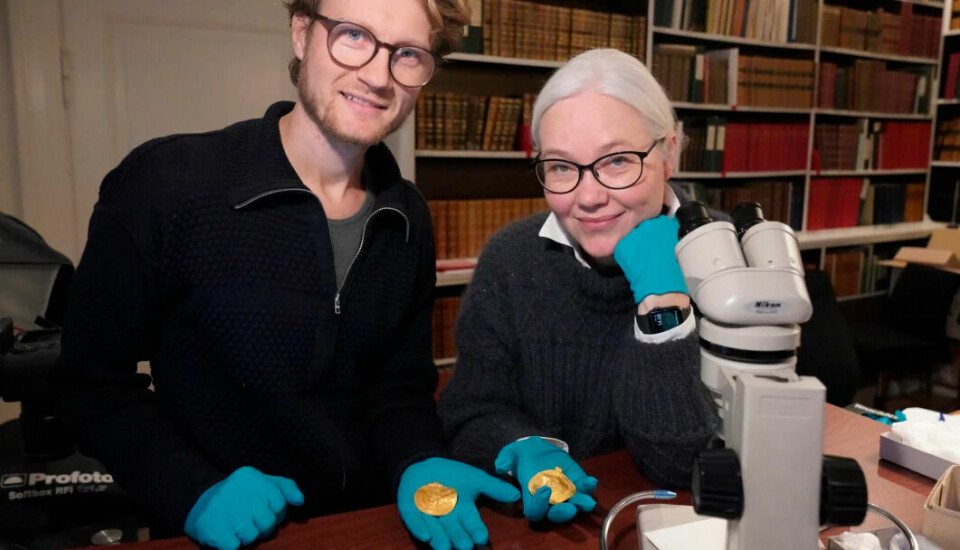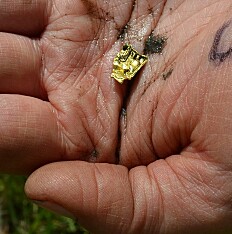
A gold coin that changes history: Oldest known reference to the Norse god Odin found in Denmark
Norwegian and Danish researchers have found the god Odin's name on a gold coin from the beginning of the 5th century. Norse mythology must therefore be dated 150 years earlier than before.
“I think this is just amazing! With this discovery, we come quite a lot further in the scientific interpretation from this time period. We do not have much information about this time from before, but we now have new language material and new words that have not previously been recorded. It gives new insight into the practice of religion for this period,” linguist Krister Vasshus from Stavanger tells NTB, the Norwegian news agency.
He is Odin's man
Vasshus has been working on deciphering and interpreting the sensational find, which originates from the gold treasure Vindelevfunnet, discovered a year and a half ago in Jutland in Denmark.
The treasure contains about one kilogram of ancient jewellery and coins which were probably buried in the Iron Age, 1,500 years ago, but contain much older objects, including coins dated to the early 5th century.
On a gold coin with a portrait of what may be a king or a powerful man, the inscription "He is Odin's man" is written.
This means that the gods from Norse mythology were already known at the beginning of the 5th century, which is 150 years earlier than previously thought.
Before this, the oldest inscription with Odin's name was found on a costume buckle discovered in Nordendorf in southern Germany from the last half of the 6th century.

Human history
“We have found the proof in black and white, and it is a great discovery. I am completely ecstatic! This type of inscription is extremely rare, we may find one every 50 years. This time it turned out we found something that changes human history,” Vasshus says.
He specialises in older Scandinavian language history, and works at Sagnlandet Lejre in Denmark, a research centre and family park that spreads knowledge about the past.
The coin is a so-called bracteate, which is a coin with an imprint and writing on only one side. The inscriptions have been difficult to interpret, both due to wear and tear, and the fact that they are in a language that has developed a lot over the centuries. The runes are also only raised by 2–3 millimetres.
Most viewed
“The runic inscription has been the most difficult to interpret in my 20 years as a runologist at the National Museum, but the discovery is also absolutely fantastic. It is the first time in human history that Odin's name has been mentioned,” linguist Lisbeth Imer says.
She believes the runes can become a key to understanding other prehistoric runic inscriptions.
Gives new meaning
With only a small surface area available, bracteates usually have simple motifs. It could be a king's head, crown, the king's monogram or a cross. In the whole of Northern Europe, more than 200 bracteates with inscriptions have been found. However, the vast majority of runic inscriptions on bracteates do not make linguistic sense.
They consist mostly of short, sacred words, or they are distorted copies of an inscription that once made sense but was lost after repeated copying.
The bracteates from the Vindelev find are somewhat thicker coins with sharper inscriptions. One that was found in 1852 has turned out to have a ‘twin’, but with a far more indistinct impression than the one now discovered. It has therefore been possible to understand what is written on this earlier find.
A third bracteate has also been shown to have a ‘twin’ from Funen, found in 1689. People have previously guessed what was written on the Funen coin, but now that they have a sharper, clearer version, Imer and Vasshus can correct this.
———
Translated by Alette Bjordal Gjellesvik.
Read the Norwegian version of this article on forskning.no
------






































